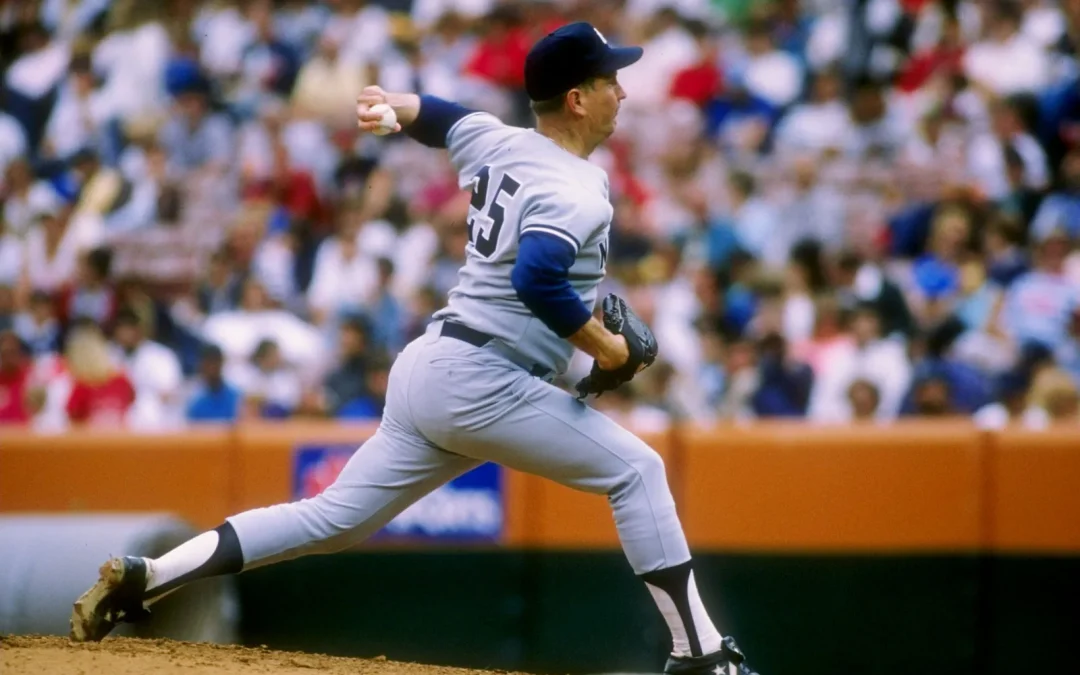“It’s impossible,” said pride. “It’s risky,” said experience. “It’s pointless,” said reason. “Give it a try,” whispered the heart. Unknown
July 1974 – Los Angeles, California: Los Angeles Dodgers pitcher Tommy John peppered team orthopedic surgeon Frank Jobe with questions. “Is there any chance that I can pitch again? Is there anything that can be done?” Jobe shook his head and was quiet for a moment. Then he described a new experimental surgery in which a tendon from another part of the body was being used to repair ligament damage in the feet and knees of polio victims to help them walk. It had never been tried on a baseball pitcher’s elbow.
Jobe thought he might be able to take a tendon from John’s right wrist and replace the damaged ligament in the left elbow of his pitching arm. John asked, “What are my chances of pitching without surgery?” Jobe told him, “Absolutely no chance.” John persisted, “And if I have the surgery?” “Maybe one in a hundred,” the doctor responded. “So, there is a chance?” John was encouraged
Tommy John’s high school coach once said of him, “He would rather die than quit.” The young pitcher had no quit in him. He was born an underdog. He was an excellent high school baseball pitcher and basketball player. Teammates joked that John couldn’t break a pane of glass with his fastball, but the soft-throwing southpaw won 28 games and lost only two at Gerstmeyer High School in Terre Haut, Indiana.
After high school, John turned down a basketball scholarship to Kentucky and to the surprise of many, he signed a baseball contract with the Cleveland Indians. In 1963, 20-year-old John, with a mediocre 86-mile-per-hour fastball, became a starting pitcher for the Indians after just two minor league seasons.
Over the next 11 seasons, he won 146 games with Cleveland, the Chicago White Sox, and Los Angeles Dodgers. By the 1974 season, sporting a 13-3 record with the Los Angeles Dodgers, John had become one of the best pitchers in baseball.
But on July 17, 1974, while pitching against the Montreal Expos, John heard a pop and felt a sharp pain in this left elbow. X-rays revealed a torn ulnar collateral ligament, the most common career-ending injury to pitchers. Dr. Jobe shared the bad news with the 31-year-old pitcher. His promising career was over.
After the discussion with Dr. Jobe about his chances to pitch again, John opted to be a guinea pig for the experimental surgery. He had nothing to lose. On September 25, 1974, in a 4-hour surgery, Jobe took a tendon from John’s right wrist, drilled holes into John’s ulna and humerus bones and grafted the tendon in a basic figure eight design, held in place by anchors.
John missed the entire 1975 season while rehabbing his arm. Although he pushed himself in his daily workouts, it took 18 long months before he could throw a baseball again. There were plenty of times when he wondered if he would ever pitch again.
During the low points, John hung his hope on a verse in his locker from Luke 1, “For nothing shall be impossible with God.” In 1976, he finally returned to the Dodgers lineup. His 10-10 win-loss record earned him the National League Comeback Player of the Year award. A year later, Tommy John was a better pitcher than he was before the surgery. With increased velocity on his fastball, he won 20 games against seven losses.
Tommy John pitched for 12 seasons following his elbow surgery. He won 164 games, 18 more than during the 11 years before the surgery. When he finally retired in 1989 at age 46, the “bionic man” was the oldest player in baseball. During his 26 major league seasons, second only to Hall of Famer pitcher Nolan Ryan’s 27 seasons, John won 288 games, the seventh most by a left-handed pitcher in history. He played in four All-Star Games and pitched in four World Series with the Dodgers and New York Yankees.
Fifty years ago, an orthopedic surgeon and a baseball pitcher chose hope, against the odds, and tried a revolutionary elbow reconstructive surgery because there were no other options. Today Dr. Jobe’s surgery is known universally as Tommy John Surgery. More than 2,400 major league pitchers have had the operation to extend their careers. With a 90% success rate, it has become a popular choice for baseball players of all ages with what is otherwise a career-ending injury.

Amazing story. I heard about it years ago but never knew the details.